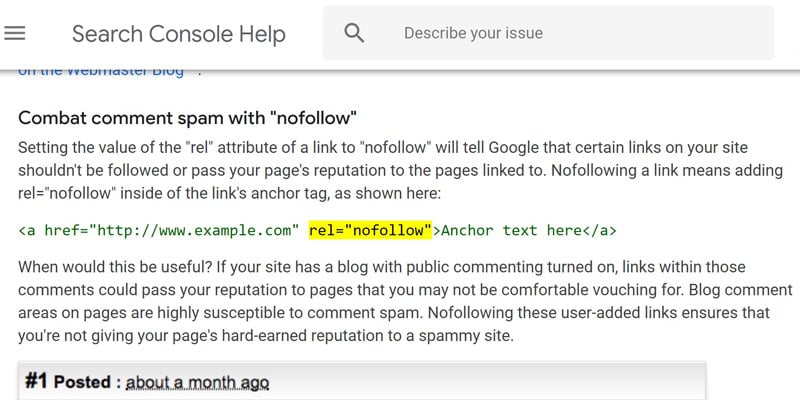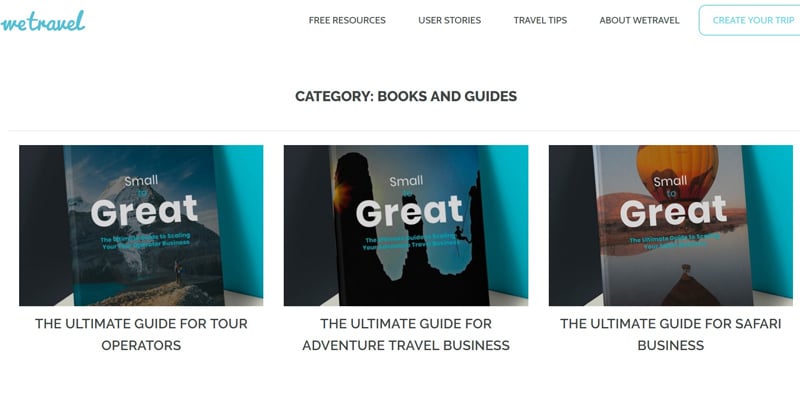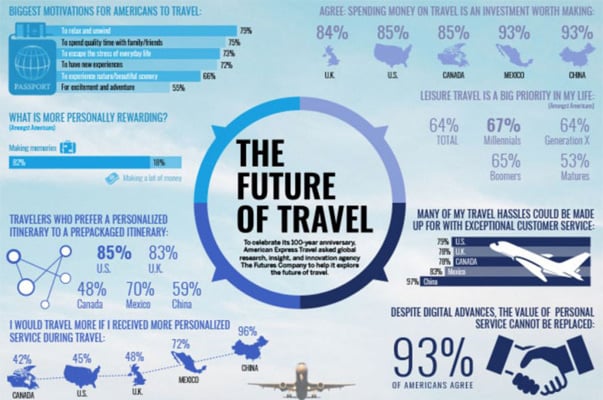Best Backlinking Practices For Your Travel Business
What is Backlinking? If you have read our article on How To Grow Organic Traffic To Your Travel Website With SEO then you will know that Backlinking is an important off-page SEO technique used to establish trust and authority signals of a website. Search Engines use these signals to determine organic rankings.
And what is a Backlink? A Backlink is a link that points from one website to another. A website has a backlink to your website, whilst your website contains a backlink from the website.
The Ultimate Guide To Scaling Your Tour Operator Business
A 150-page guide that covers everything from establishing a winning travel brand to delivering a market-leading service
Download FREE eBook
Search engines interpret a backlink as a vote of confidence for a website and its content. You see, when people backlink to your content it means that the content is credible, useful and authoritative to them. Therefore, the more backlinks your content has, the higher Google and other search engines deem your authority to be.
Authority, in turn, determines the search engine ranking of a website, and as you already know, websites that rank higher on a search engine have more visibility and increased traffic than those further down the rankings.
The Types Of Backlinks You Want To Build To Your Travel Business Website
Backlinks From High Domain Authority Websites
Google puts more weight on high-quality backlinks that come from high authority websites than on links that come from low authority sites when determining search engine rankings.
Tools such as SEO Review Tools’ website authority checker can be used to check Domain Authority, or if you use Ahrefs’ authority checker then it is known as the Domain Rating.
 Backlinks From Topically Related Websites…
Backlinks From Topically Related Websites…
Google puts more weight on backlinks that come from sites and pages that are topically related to your own site.
For example, if your Travel website which lists activities to do in Barcelona receives lots of backlinks from websites advertising accommodation there, this tells Google that you are an authority in that field and will factor in your search engine rankings.
… And From New Domains
Ideally, you also want new domains with no prior links backlinking to your content. Simply put, building volumes of backlinks from different websites has more weight on your search engine ranking than thousands of backlinks from a single website.
DoFollow And NoFollow Backlinks
You only want to attract dofollow backlinks to your content. This is because nofollow backlinks are not helpful to SEO as they tell Google to ignore the direction of the link and do not factor in the ranking algorithm.
Most backlinks are dofollow though so do not worry about this too much. Nofollow backlinks tend to appear in Blog comments, Press Releases and Paid Advertisements.

Backlinks That Contain Your Focus Keyword In The Anchor Text
Backlinks that include your focus keyword in their anchor text are ranked highly by Google as this is an affirmation that your content is relevant to the focus keyword.
Key term: Anchor text is the visible clickable text that links one webpage to another.
For example, you have written and posted an article on How To Use Pinterest For Your Travel Company And Generate Business and made your focus keywords Pinterest for Travel Companies. A backlink to your article that incorporates ‘Pinterest For Travel Companies’ in its anchor text indicates to Google that your article is of high relevance to the keyword search.
That being said, care must be taken not to over-do it with keyword rich anchor text as according to the Google Penguin Algorithm, Google might see this as spam and penalize you.
How To Turn Content Into Backlinks For Your Travel Business Website
Now that you know the types of backlinks that raise your search engine ranking, let us take a brief look at a few backlinking strategies you can use to get links from various popular and authoritative online sources.
1. Create some high quality and amazing content for your website and then promote it to build backlinks. Ultimate guides and free resources are always a winner. Be sure to include as much information as possible on the subject so that people who read your content perceive your guide as authoritative and subsequently build backlinks to your content.
Promote your guide or resource to any businesses that you mention in it. Drop them an email to introduce yourself, let them know you thought them a credible source and mentioned in your guide – they might like to share it on their own site.

2. Look for Link Roundups or Best Of blog posts in your niche. These are daily, weekly, or monthly blog posts that link to outstanding content. Contact them and offer your resource as relevant content for their next round up or article.
3. Coined the Moving Man Method by Brian Dean of Backlinko, identify websites in your niche that have either changed name, rebranded, or are outdated. Then use a backlink checker tool to see which websites are still backlinking to the resources on the obsolete site. Contact them to let them know that they are backlinking to a site that has moved on and offer your resource as a suitable replacement.
4. Search website pages in your niche for any broken links. Broken link building is similar to the Moving Man Method but you search specifically for links backlinking to broken pages that display the 404 error. Once again, contact the administrators of the page and offer up your amazing resource as a replacement.
5. Create an amazing and relevant infographic to get backlinks. As we have seen from Pinterest, Infographics are very popular and get a ton of backlinks due to their visual nature.
6. Find any online mentions of your brand using your tool of choice and check to see if the mentions are backlinked to your website. If not then reach out to the site and suggest backlinking to your content so that people can find you easily. Generally speaking, people who reference your brand like you and are willing to create the backlink.
7. Guest post on other related travel websites in your niche and connect the content to your own site by backlinking the post. Only post on websites that are relevant to your niche though, you don’t want to appear just anywhere..
8. Sign up as a Source on the Help A Reporter Out (HARO) website. Once registered you receive requests from reporters on the lookout for information from credible sources on specific topics they want to write about. Respond with your credentials and some helpful tips. If the reporter uses the information you supplied you will get the backlink from their high authority news site.
9. One of the easiest backlinking strategies is to post a Testimonial or Review. After all most, if not all, businesses love sharing a positive review. Purchase or book a travel product that you are interested in and send in a testimonial to the company afterward. Let them know they can share your website details and information in the review.

Summary
Backlinking is just one of the many SEO techniques that can be used to improve your website’s search engine rankings and domain authority.
Following all the best backlinking practices for your Travel Business to build backlinks will only get you so far though – to complement them you also need great content that identifies your brand as an authority.
If you are interested in a more in-depth look at the benefits of content marketing are, and how it can increase traffic to your travel website take a look at our free resource.
New resources, straight to your inbox
We’re committed to your privacy. WeTravel uses the information you provide to us to contact you about our relevant content, products, and services. You may unsubscribe at any time.




